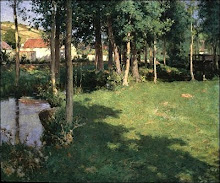Recently I made the 3-4 hour car trip from Sydney to Canberra to see the Turner from the Tate exhibition at the National Gallery of Australia.
I had seen many of the works years ago at the Tate Gallery in London (which has the best collection of his much dispersed work), but an opportunity to see them in the flesh again was too good to pass up.
J. M. W. Turner (1775–1851) was one of Britain’s most original and inventive artists, a key figure of Romanticism, who influenced the Impressionists and even the Abstract Expressionists.
The exhibition includes several immense landscapes full of his ethereal brushstrokes and fascinating detail. These seem to glow as with an inner light, and are magnificently framed in monumental gilded mouldings. There are also many gem-like little watercolours to see.
A highlight of his later career is Venice, the Bridge of Sighs, 1840 (top and detail) in which he uses the oil technique of glazing over impasto. This technique gives the illusion of fine detail, without the need for laborious brushwork.
The toxicity of real Lead White paint meant that it has been replaced by other pigments such as Titanium White. It's not easy to obtain these days, but some manufacturers of professional grade oil paints still make it - for a hefty price. Lead White it is particularly suited to the creation of fine impasto effects due to its ropey consistency, which can be manipulated into delicate peaks and cake-decoration-like swirls.
Lead paint is fairly safe as long as the pigment is bound in the oil medium and not in a powder form, where it can be inhaled. You would not want to lick your brushes, as some artists I know have a habit of doing. I wouldn't recommend getting it on your skin either.
After the impasto has dried, a thin glaze of a contrasting grey or ochre is washed over it. The glaze collects in the depressions of the impasto, giving the impression of detail from a distance.
In Bridge of Sighs, Turner uses impasto only to pick out foci of interest, such as architectural details on the Doge's Palace. It looks as though he's used both an ochre yellow and a purplish grey glaze. Purple and yellow are complementary colours, so the effect, especially from a distance, is a kind of vibrating iridescence, later used by Monet to great effect to recreate sunlit walls.
Here are some photos the exhibition staff let me take (no flash allowed, so a little blurry, but better than I expected in the dimly lit gallery):
The last three images are details from the larger works.
More information about the exhibition here.


















.jpg)













+1900.bmp)